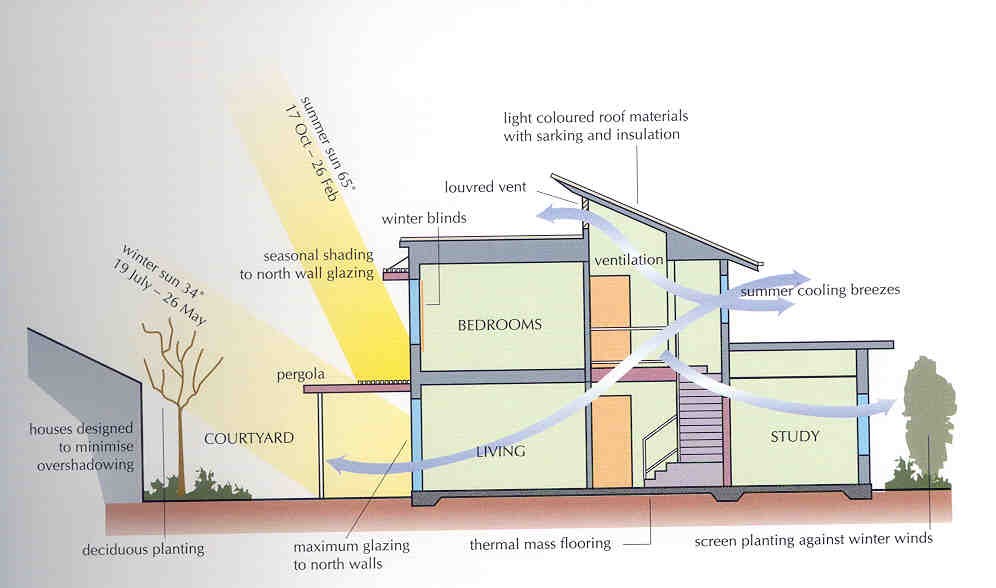Passive design utilizes the natural resources of our world to reduce your house’s energy profile. Many of these passive design principles are most effective when they are integrated during new construction periods, though some of these principles can be applied in retrofit project
For new construction, the following passive design strategies are typically used:
- Building location and orientation– harness the natural heating power of the sun and cooling power of the wind by locating and orienting your home correctly.
- Passive solar – heat your home using solar energy without any mechanical devices.
- Natural ventilation– use natural winds to cool or heat your house by properly positioning and sizing your windows or exhaust vents.
- Natural lighting– use natural light to reduce artificial lighting usage.
For existing homes, the following passive design strategies are feasible and effective:
- Natural ventilation
- Windows, skylights, and roofs– retrofit or upgrade your windows, skylights, and roofs to reduce energy losses of your home.
- Natural lighting
- Reduced air infiltration– improve seals around your windows and doors to reduce air leaks that can cause up to 40% of building heat losses.

Depending on the sizing of the system and the design of the house, passive design can save thousands of dollars throughout the lifetime of the building with little to no added upfront cost for a home. Properly oriented homes with passive solar incorporated in the design have been shown to save 30% – 90% in home operation costs.
Natural lighting, also known as daylighting, is a technique that efficiently brings natural light into your home using exterior glazing (windows, skylights, etc.), thereby reducing artificial lighting requirements and saving energy. Natural lighting has been proven to increase health and comfort levels for building occupants.
Natural ventilation is the use of wind and thermal buoyancy to create air movement in and out of your home without the use of mechanical systems, with the goal of bringing fresh air into your home. During nighttime in the summer months natural ventilation can provide free cooling and reduce your home energy use. Natural ventilation design is typically considered during the home design phase.
FACTORS AFFECTING NATURAL VENTILATION
The effectiveness of natural ventilation varies based on:
- Dominant wind speed and direction
- Surrounding environment
- Building footprint and orientation
- Outdoor temperature and humidity
- Window sizing, location, and operable
A window’s energy efficiency is also impacted by the framing material. Each framing material has its own advantages and disadvantages. There are five main framing material types:12

Add Comment